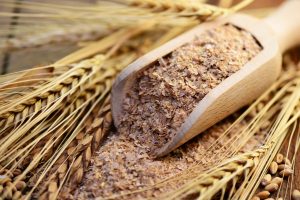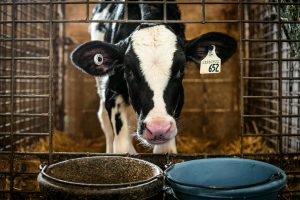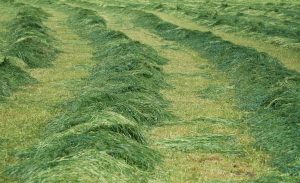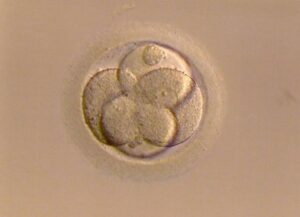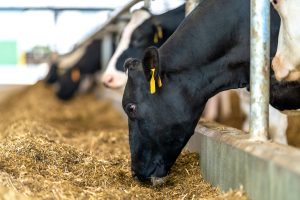Álvaro García
In dairy farming, replacement heifers represent both a biological and economic investment. Decisions made from birth through first calving have long-term consequences for performance and herd profitability. While a commonly cited benchmark is an average daily gain (ADG) of 780 grams per day (1.7 pounds), applying this figure uniformly across all stages of development oversimplifies a complex process. Holstein heifers do not grow at a constant rate, nutritional needs and growth priorities change significantly as they progress from birth through puberty, breeding, and into calving.
The preweaning period is the most efficient growth phase of a heifer’s life. Although milk and calf starters are among the most expensive feeds, calves under two months of age convert nutrients into body weight with remarkable efficiency, requiring only 2 to 2.5 kg of dry matter to gain 1 kg of weight. This feed conversion ratio (FCR) of 2:1 to 2.5:1 equates to nearly 50% efficiency, far surpassing later stages. As calves mature, feed efficiency declines: 3–4:1 from 2 to 6 months, 4:1 between 6 and 12 months, and 6–7:1 from 12 to 24 months. These shifts mean weight gain becomes increasingly expensive as heifers age.
Investing in growth during the early weeks pays long-term dividends. Accelerated early development allows calves to transition more quickly to forage-based diets, reducing overall rearing costs. Missing this window can result in slower growth, delayed breeding, and increased days on feed. Conversely, overfeeding in later stages risks excessive fattening, calving complications, and impairing future milk production. Applying a flat ADG target across all stages ignores these biological realities and can compromise health, fertility, and performance.
Understanding growth by stage
Heifer development must be broken into distinct phases, each with specific ADG goals and nutritional priorities:
Growth Phase |
Months |
Daily gain |
Focus |
|
Pre-weaning |
0–2 |
1.8–2.2 lb/day (0.8–1.0 kg/day) |
Accelerated growth via milk and starter |
Post-weaning to puberty |
2–6 |
1.8–2.2 lb/day(0.8–1.0 kg/day) |
Frame growth, rumen development |
Puberty to breeding |
6–12 |
1.6–2.0 lb/day(0.7–0.9 kg/day) |
Controlled steady growth |
Breeding to calving |
12–24 |
1.5–1.8 lb/day(0.7–0.8 kg/day) |
Avoid fattening, support fetal growth |
Meeting these targets ensures heifers are bred around 13–15 months and calve between 22 and 24 months with the appropriate frame size and body condition. Calving too late delays return on investment, while calving too early or underweight can harm long-term productivity.
Calves should double their birth weight by 60 days. A typical Holstein heifer is born at 85–95 lb (39–43 kg) and should weigh 170–190 lb (77–86 kg) by two months if provided a quality milk and starter grain program. Falling short of this benchmark signals nutritional or health problems. For example, a 60-day-old calf weighing only 45 lb indicates severe growth failure, possibly due to poor feed intake or illness.
At this stage, lean tissue growth is far more efficient than fat gain. Muscle contains more water and requires less energy to deposit than fat. High-energy, low-protein rations may promote fat at the expense of skeletal growth—particularly in larger-framed heifers that require more protein.
Setting calving targets
Growth targets are best based on mature body weight. Heifers should be bred at about 55% and calve at 82% of their mature weight. This is typically estimated from mid-lactation, third-lactation cows with a body condition score of 3.0.
Mature Size (lb) |
Breeding Weight (55%) |
Calving Weight (82%) |
1,000 |
550 |
820 |
1,400 |
770 |
1,150 |
1,800 |
990 |
1,475 |
Puberty usually occurs at 45–50% of mature weight. Breeding at the third estrus post-puberty improves fertility, while delays raise the risk of over-conditioning and poor conception. To achieve timely calving, growth must be actively managed. The table below outlines required daily gains based on initial weight and targeted calving weight and age:
Mature Wt (lb) |
Calving Age (mo) |
Weight @ 4 mo |
Breeding Wt |
Calving Wt |
Breeding Age (mo) |
Needed Gain (lb/day) |
1,000 |
22 |
210 |
550 |
820 |
13 |
1.2 |
1,400 |
22 |
275 |
770 |
1,150 |
13 |
1.8 |
1,800 |
24 |
350 |
990 |
1,475 |
15 |
1.9 |
Feeding plans must be tailored to support desired gains at each stage. Younger heifers with high lean growth potential need relatively more protein. Feeding a one-size-fits-all ration risks underfeeding small calves or over-conditioning large-frame yearlings.
Though high-quality early-life diets can be costly, they’re often offset by reduced time to calving and greater lifetime performance. A well-grown heifer is not just ready to calve earlier—she’s more likely to become a productive, long-living cow. There is no one-size-fits-all formula for raising replacement heifers. Genetics, environment, and management all shape growth. But a structured, phase-based growth strategy rooted in biology offers the best return. Moving beyond average daily gain and focusing on stage-specific development lets producers raise heifers truly built to milk.
© 2025 Dellait Knowledge Center. All Rights Reserved.



